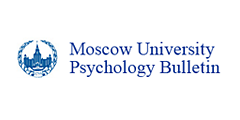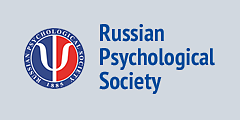
Institute of Cybernetics, Moscow Technological University (MIREA), Moscow, Russia
-
Cognitive Predictors of Success in Learning Russian Among Native Speakers of High School Age in Different Educational SystemsVerbitskaya, L.A.; Zinchenko, Yu. P. ; Malykh, S. B.; Gaidamashko, Ig.V.; Tikhomirova, T.N.; Kalmyk, O.A.PDF HTML4991“ CITE
Verbitskaya, L.A., Zinchenko, Y.P., Malykh, S.B., Gaidamashko, I.V., Kalmyk, O.A., Tikhomirova, T.N. (2020). Cognitive Predictors of Success in Learning Russian Among Native Speakers of High School Age in Different Educational Systems. Psychology in Russia: State of the Art, 13(2), 2-15.
copied
-
Background. The search for cognitive predictors of success in language learning is associated both with basic cognitive characteristics (processing speed and spatial working memory) and with general characteristics (intelligence). However, the ratio between cognitive functioning and success in language learning can change during the period of school education and depends on the socioeconomic level of the society and the effectiveness of the national educational system.
Objective. To analyze the cognitive predictors of Russian language learning samples of Russian-speaking 11th graders from Russia, Kyrgyzstan, and Moldova, three countries with a similar organization of the educational system, but differing in the functional effectiveness of that educational system and in their socioeconomic levels.
Design. The sample comprised 545 Russian-speaking 11th graders (average age = 17.42 + 0.59; 36.1% male) studying Russian throughout their public-school education in Russia, Kyrgyzstan, and Moldova. The statistical methods of one-way analysis of variance, correlation, and multiple regression analysis were used.
Results. Among the indicators of cognitive development we analyzed, the functioning of the national educational system is the one most associated with the development of fluid intelligence of 11th graders, which is directly proportional to the quality of education in the country; to a lesser extent, it is associated with the development of working memory. In Kyrgyzstan (with an average level of socioeconomic development) and Moldova (with a high level of socioeconomical development), only fluid intelligence was associated with the score on the state exam on the Russian language. In Russia, which has a very high level of socioeconomic development, fluid intelligence and spatial working memory were updated.
Conclusion. Differences in the relationship between cognitive functioning and success in Russian-language learning are associated both with the objectives of the state exam (identification of pupils ready to attend university versus testing of what was learned in school), and, in conditions of low educational effectiveness, with a greater cognitive load during the exam.
DOI: 10.11621/pir.2020.0201
Keywords: processing speed; spatial working memory; fluid intelligence; success in learning Russian; native speakers; state final examination; teacher’s assessment
-
-
Regulatory and personality predictors of the reliability of professional actionsMorosanova, V.I.; Gaidamashko, Ig.V.; Chistyakova, S.N.; Burmistrova-Savenkova, A,V.; Kondratyuk, N.G.
-
Background. The present research is carried out in the context of the conscious self-regulation of professional activity.
Objective. It investigates the regulatory and personality predictors of reliability in rescue operations under stressful conditions.
Design. The research sample includes 87 rescuers (72 men and 15 women aged from 25 to 50 years). Respondents were asked to complete the Morosanova’s Self-Regulation Profile Questionnaire – SRPQM, the Eysenck Personality Profile - Short (EPP-S), and the expert questionnaire “Professional Reliability of Rescue Operation” designed for this particular study.
Results. On the basis of a correlation analysis, the structural model of the predictors of action reliability was constructed using the maximum likelihood method. Consistency indices showed a good agreement between the model and empirical data. The model contains three latent factors: “Self-regulation”, “Neuroticism” and “Reliability of actions”. As the model displays, the “Self-regulation” factor is a significant predictor of professional action reliability. There are two indicator variables for the factor “Self-regulation”: the self-regulation reliability considered as its stability in the stressful situations, and the rescuers’ levels of development of professionally critical regulatory features - modeling of conditions significant for the achievement of goals and the programming of actions. The study results also show that personality dispositions (by Eysenck) have only indirect influence on action reliability. As the structural model reveals, the conscious self-regulation is a mediator in the relationship of neuroticism traits and action reliability.
Conclusion. The conscious self-regulation is a significant predictor of professional action reliability under stressful conditions. It is also the mediator of the effects of personality dispositions on the reliability of action.
DOI: 10.11621/pir.2017.0417
Keywords: professional activity, reliability, conscious self-regulation, personality traits, structural model
-
-
The contamination of young people’s notions about narcotics and psychoactive substances as a threat to psychological security
-
The study described in this article investigated contemporary young people’s perceptions of drugs and psychoactive substances (PAS). In the course of the research the following hypothesis was tested: in young people’s perceptions about drugs and PAS there are differences in emotional coloring, coherence, and tolerance. J.-C. Abric’s structural approach was used as the basic methodology. The free-associations method provided the bulk of the empirical material. The results obtained were processed via prototypic analysis (by P. Vergès’s method), indexing of emotional associations (by E.E. Pronina’s method), and frequency and content analysis.
As a result the core and the periphery of the perceptions of youth about drugs and PAS were described, and generalized notional categories that synthesize the structural elements of the perceptions were identified. The study revealed that the perceptions of young people about drugs and PAS do differ in coherence, tolerance, and emotional coloring. Perceptions of drugs are firm, consistent, and negative, while perceptions of PAS are less coherent but dynamic and have an ambivalent emotional coloration. The results are of prognostic importance for understanding young people’s attitudes toward drugs and PAS and can be used to design programs and measures directed to the prevention of PAS and drug abuse.
DOI: 10.11621/pir.2016.0204
Keywords: perceptions, structure of perceptions, core and periphery of perceptions, perceptions of drugs, perceptions of psychoactive substances
-









